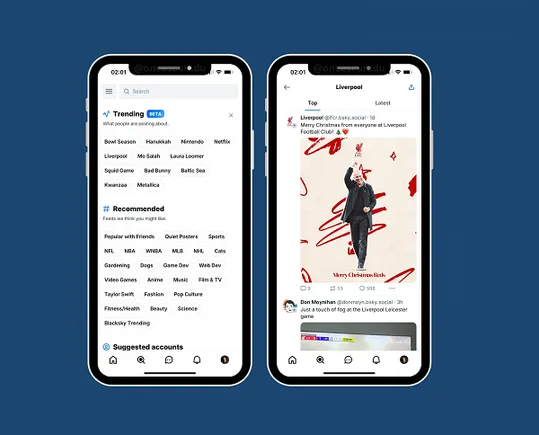Just a few years ago, CIOs were largely viewed as mere service providers, charged with overseeing IT infrastructure, enterprise applications and security. Now the role is emerging as one of the most pivotal positions in the C-Suite, especially as CIOs led successful transitions to remote and hybrid work during the pandemic and as the pressure of digital transformation increasingly defines the trajectory of business.
Despite this, many CEOs and boards struggle to redefine their approach to structuring and adopting this essential business role. Many organizations grapple with hiring the right talent to fill this pivotal post—failing to appreciate how the required leadership qualities have shifted and the scale of organizational and cultural changes necessary to maximize CIOs’ impact within complex, highly dynamic business environments.
Too often we see clients either setting the bar too low, looking for order takers instead of leaders or setting great talent up for failure by positioning them within an organizational structure ill-equipped to enable them to drive the digital transformations they are expected to lead.
To better understand the challenge of building great CIO organizations, we interviewed 20 highly respected CIOs to learn what they see as the critical enablers to building great technology organizations and executing the desired results across a global and complex enterprise. Here is a summary of insights.
• Elevate reporting structure and break down silos
While companies have begun to appreciate the need to reimagine their business model to find value in their data and surpass customer expectations, too few have translated this business imperative into new organizational designs. Many CIOs remain layered despite the growing importance of their role and report to someone who reports to the CEO. Often this is a result of a failure to recognize that the CIO and CEO work hand-in-hand to ensure technology is a core component of the company’s value proposition and enterprise strategy. Not having a direct line to the CEO disempowers the potential of a visionary CIO to drive transformation and enable business outcomes.
Compounding the problem is a tendency to break the digital transformation mandate across multiple leaders and roles to better manage complex and strategically important capabilities. This can result in a proliferation of Chiefs—Chief Digital Officer, Chief Data and Analytics Officer, Chief Transformation Officer—each with their own agendas, business requirements and talent strategies. At a moment when competitive advantage is created by the ability to break down barriers and blend skillsets, there are too many organizations creating even more silos. Instead, companies need to free technology leaders to think like business leaders, using agile at scale to rethink end-to-end business processes and drive towards greater integration of technology and business in all aspects of how a company operates.
• Invest in developing leadership skills across your technical leader pipeline
Even as companies expect more from their CIOs and their teams, they have done little to help individuals in these critical roles surface as leaders capable of driving and sustaining real change. Today, IT executives are expected to lead horizontally, mange the inevitable tensions of execution, overcome dominant and old ways of thinking, introduce new agile processes and ways of working and deliver with alacrity. Yet they often lack the leadership skills to do so—self-awareness, comfort with ambiguity, influencing without authority and leading with empathy. This is particularly true as technology leaders emerge into more senior levels of the organization and need to do a better job of getting buy-in from leadership. This requires greater capacity to connect with people, tell stories and win people over.
While traditional training—in academia and industry—have proven effective in enabling development of skills across technology, data and information security, so many professionals admit their journey lacked a sufficient opportunity to cultivate their leadership skills. In an environment where what got you here won’t get you where you need to go, increasingly we’re seeing the cost of these gaps in career journeys. CIOs need the talent and organizational capabilities to enable them to act as the strategic thinkers they can be, while delivering on the needs of the business at an ever-accelerating pace. The right focus on talent throughout the technology ecosystem should permit the CIO to demonstrate the necessary flexibility to think more strategically. In addition, providing necessary leadership training to build the skills in the IT talent pipeline will ready more individuals for the requirements of the CIO role of the future.
• See your CIOs as a culture catalyst
The imperative is for “Future CIOs” to leverage their technology and business acumen to help the CEO reframe the ways the company creates value. This implies shifting ways of working, helping leaders adopt new practices such as agile at scale, and ensuring a coherent vision with clear accountabilities as organizations can seem increasingly fragmented and difficult to maneuver within. It means the role of the CIO is not only to deliver technology, but to shift behaviors and mindsets with a focus on a new set of success drivers to take the company into the future. The impact and value of technology investments comes in the form of changing and transforming the way business functions, delivers products and services, and creates value for customers.
Along the way, each should adopt the required convergence associated with data and information security as this alignment is critical. It is not surprising that while once upon a time, a great CIO was a brilliant engineer who could understand the business, today great CIOs are change agents who create a vision of the future and help CEOs make it a reality. Conversations with leaders today focus on the same need: technology-driven business means technology leaders must be change agents and be embraced across the enterprise with the autonomy and budget to drive results. From our own research, we see a growing expectation that technology leaders will spend as much as 80% of their time thinking about culture and change, representing a dramatic shift from only a few years ago.
The Future CIO
Companies need CIOs who are both great technology and business leaders. They need the strategic thinking of the CEO, the financial acumen of the CFO, the empathy for the customer experience of the CMO, and the influence of culture as the CHRO. In other words, the Future CIO must be an Enterprise Leader, who can not only deliver on the challenges at hand but, through their influence, can transform the company as a whole. The CIO as an Enterprise Leader also leverages their ability to be learning agile, understanding that industries can be disrupted at any moment and so, to make a meaningful impact, one must deliver results based on existing capability while continuously innovating for the future.
Creating enterprise leaders in the CIO function will require a rethink of organizational design and investment in developing the necessary leadership capability. This includes the right reporting line to the CEO and building the organizational structure that values the importance of a business model enabled by data, technology, and security—where technology is integrated across the company. While CIOs must have technical skills to understand the digital landscape, they must also have the leadership skills including empathy and communication required to translate facts into effective storytelling. This includes the quarterly exposure to the board of directors to provide updates on critical strategic updates associated with the aforementioned transformational journey. Through empathy and communication, CIOs can also inform the strategic vision for the company, as well as build influence. This creates followership to allow for implementation of the plan and work in synchrony with the vision of the CEO to maximize shareholder value, employee engagement and competitive advantage.






































































![Winning Customer Love: How Small Businesses Earn Loyalty [Infographic] Winning Customer Love: How Small Businesses Earn Loyalty [Infographic]](https://www.socialmediatoday.com/imgproxy/o-F2QSgqcZFBUKioazN5_zhvhxZ7jhaJw3Vu6hQ77t8/g:ce/rs:fill:770:364:0/bG9jYWw6Ly8vZGl2ZWltYWdlL2N1c3RvbWVyX2xvdmUyLnBuZw.png)

